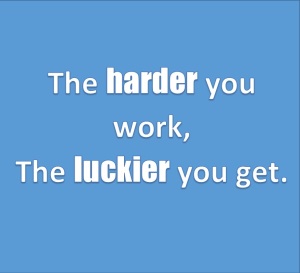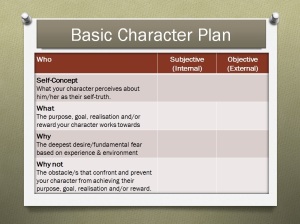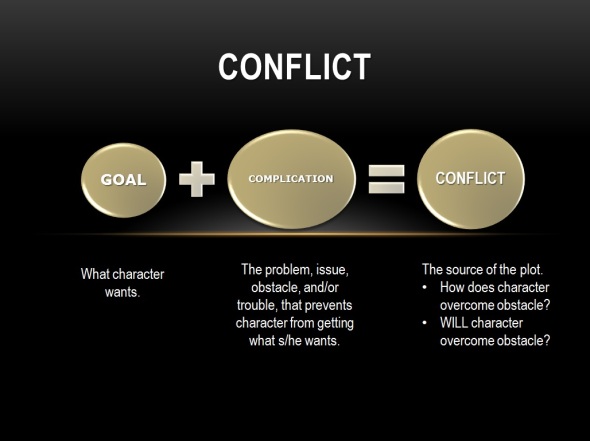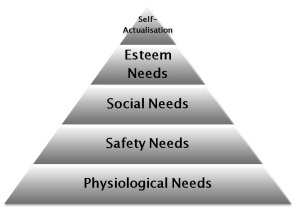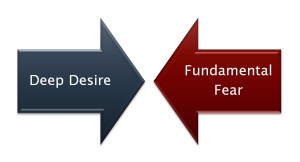From an Author’s perspective…
To get the intro over and done with: the Productivity Commission is looking into Intellectual Property Arrangements, and has released a Draft Report outlining proposed changes. These changes include copyright and Parallel Importation Restrictions (PIRs).
First of all, what is Parallel Importation?
Put simply, parallel importation is a non-counterfeit product imported from another country without the permission of the intellectual property owner – also known as ‘grey goods’.
For example: a company launches a product. Country1 sells it at one price (Price1), and Country2 sells it at a different, higher price (Price2). A parallel importer can purchase the goods from Country1 at Price1, then import the goods into Country2 and sell it for less than Price2.
The aim is to create affordability in products, and is of benefit to the consumer by pushing down the cost of goods as Country2 sellers compete with the price-setting of the parallel importer.
How does this relate to books?
For example, if my Australian book, Runaway Lies, (edited, copyedited, proofread, cover design, marketed, etc by Harlequin Australia) was also available in the U.S. market for a cheaper price, then a parallel importer could purchase that U.S. version, import it, and sell it here in Australia, at a cheaper price than that set by Harlequin AU.
It’s a win for Australian readers, right? Um, maybe not so much. (We’ll call this Myth #1, and come back to it.)
Currently, the Copyright Act 1968 states that copyright is infringed by a person who imports an item into Australia (without the licence of the owner of the copyright), for the purpose of selling, letting for hire or by way of trade offering exposing for sale or hire, the article, or distributing the article for the purpose of trade or any other purpose that will affect prejudicially the owner of the copyright.
This means, at one point, the Australian Government saw fit to offer protections to Australian authors, publishers and the Australian culture. (We’ll call this Red Flag #1, because we’ll be coming back to it.)
What are Parallel Import Restrictions (PIRs)?
Currently, if an Australian publisher releases a book, booksellers must buy that book from the publisher (and their providers, e.g.; printers/book packagers). They are not permitted to purchase or import a cheaper version from overseas. There is an exception, and that is if the book is released overseas and still is not available in Australia 30 days after its release – or if it’s for a customer’s personal use, single copies can be purchased. Presently, Australian publishers have committed to having the book released in Australian within 14 days of an overseas release.
If we look at the international markets, Australia simply does not possess the economies of scale. That is, in the USA and UK there is a higher population, so more copies are printed. The more copies you print, the lower the item cost. In Australia, our population is lower, so our print demand is lower, ergo our item cost can be higher.
In the argument supporting the repeal of the PIRs, references are made to how getting rid of PIRs has worked in Canada and New Zealand. I have tried to find the data and reports to support this, but so far I’ve been unsuccessful. This doesn’t mean they don’t exist, it just means I haven’t been able to find it yet. But I did find something else…
*Myth #1* – cheaper books for Aussie readers
In the March 2009 Productivity Commission Research Report into Restrictions on the Parallel Importation of Books, Section 4.2 Evidence on the price effects states (and I quote):
While the PIRs potentially raise the prices of books published in Australia, assessing the actual magnitude of any such price effect is not straight-forward. To start with, it requires an understanding of the foreign sources from which book imports might be feasible in the absence of PIRs. Even where this is clear, the next issue is whether books could be sourced from these markets at sufficiently attractive prices to make them competitive with locally produced books.
Many previous studies of PIRs have relied on comparisons of prices in Australia with those in other, developed, English-speaking markets, particularly the UK and the US. Participants in this study also provided such comparisons, and the Commission has augmented these with its own analysis.
Even so, gaining a clear indication of the effects of PIRs through such analyses is difficult.
Even the Productivity Commission couldn’t prove their claim that PIRs make books more expensive in Australia. In fact, the report continues to state that when data was compiled in the Participants’ comparisons of Australian and US/UK current list prices, p76 (and I quote):
Taken at face value, the comparisons suggest that prices of many titles in Australia can be competitive with, or lower than, the price of UK or US editions.
The Commission did compile its own data, which conflicted with the above statements, but then stated (p81):
Taken at face value, the data provided by the Coalition suggests that substantial reductions in prices could eventuate were Australia to remove its PIRs. However, the Commission notes that, in these circumstances, foreign publishers would not necessarily supply Australian retailers at the wholesale prices they currently offer to booksellers in ‘cheaper’ countries. In the absence of PIRs, foreign publishers are just as likely to want to engage in price discrimination as at present.
Overall, it was found to be a bit of a mixed bag. Some books were cheaper in Australia than the USA and UK, some were more expensive, and some were about the same.
But wait, in the Productivity Commission’s Draft Report 2016, they state (and I quote):
The Productivity Commission re-examined the restrictions in 2009. Price comparison analysis found that, in 2007-08, a selection of around 350 trade books sold in Australia were on average 35 per cent more expensive than in the US.
Again, I’m no mathematician, but does that mean roughly75% were of a similar price or cheaper?
So looking at all of this, the assertion that removing PIRs will result in cheaper book prices isn’t borne out by the very people making the claim. The Productivity Commission is recommending the repeal of PIRs, yet can’t actually justify it from their own reports – although it hasn’t stopped them from cherry-picking the 2009 report findings in their references in the 2016 Draft Report.
My understanding (and it may well be flawed) is that PIRs apply to Australian content. Stories written by Australians and published in Australia by Australian publishers.
This does NOT apply to stories written by U.S. writers, published in the U.S., and then imported into Australia (or authors and stories written and published elsewhere). In other words, parallel importation can occur legally on these books – and yet we don’t necessarily see those lauded priced reductions in the market place.
*Red Flag #1* – protecting Australian authors, publishers and culture.
So what happens if we repeal the Parallel Import Restrictions?
Simply put, booksellers and importers can source cheaper versions from overseas markets and sell them to the public here in Australia.
That’s great, right? Cheaper books for readers. Here’s the thing – as mentioned above, there is no guarantee that the outcome, will in fact, result in cheaper books for the readers. If the books are in, say, the US, and the purchase is done in the US, then the money goes to….the US. There would be a small trickle down to the AU publisher, and an even smaller trickle down to the AU author (as a foreign, indirect sale). Not only that, but you do risk the ‘Americanisation’ of the Australian culture. (Please apply ‘isation’ to any other country this would be done through, I’m just picking the US to prove a point).
There is a slight difference in language. If an Australian story is bought by the US arm of the publisher, than it’s ‘converted’ –we’re talking footpath vs sidewalk, favour vs favor, realisation vs realization, etc. So essentially you’re importing an Australian story with Americanisms. We’d be bringing in our own stories with a foreign influence in the language, and possibly even some of the cultural references…
But the slow transition to the adoption foreign cultural elements and assuming them as our own will be the least of our problems (although this is pretty major, in my mind). We then have the issue of Australian publishers receiving less reward (mind you, they found the author, they edited, copyedited, proofread, designed cover and marketed the book, so most of the costs were borne here in Australia). The Australian author then receives less.
Less income means Australian publishers can afford to publish less Australian books. Australian authors will receive less money, and less Australian authors will get published. If less Australian books are published through Australian publishers, you will see the decline of the Australian publishing industry. That means all those jobs and businesses involved in the publishing industry (and we’re not just talking about the big multi-national publishers) will slowly disappear. Thomas Keneally gives a great breakdown of what that truly means in this article in the Financial Review.
Eventually, you will see less and less Australian content in the bookstores, and more and more US and UK content. Incidentally, the US and UK are NOT considering repealing their territorial copyright – so why, in all that makes clear and logical sense, are we?
Basically, this will lead to job losses. This will lead to revenue loss to international markets. This will lead to a loss in an industry that doesn’t receive much in the way of subsidy from the Government (if any) – unlike cars, manufacturing and pharmaceuticals, and this will lead to a level of cultural bankruptcy in Australia.
I have seen various remarks within the media about these arguments from authors as being at best emotional, and at worst hysterical. This shows a very clear ignorance of what is truly at stake here, but not only that, it shows a very clear ignorance of the position of a ‘creator’. When you are modifying laws to decrease an author’s earnings, when you modify laws that will effectively remove an author’s property from that author’s ownership without their consent, this is how it directly affects an author:
You take away my capacity to earn money for my family to:
- Put food on the table,
- Put clothes on our backs,
- Put a roof over our heads,
- And educate our children.
I work. I pay taxes. I support other businesses by doing my work and paying taxes.
This is important, not emotional. This stuff really MATTERS.
To try and put it into perspective: If the construction industry were able to import cheaper labour from overseas to replace the Australian labour force – despite there being people ready, willing and able to do the job here, there would be a hue and cry over the loss of jobs and revenue to the international market. Why is the book industry different? Why is it that the Australian voice, the Australian culture, is so underrated and undervalued?
New Zealand has already done this, and so far, I can’t find any reports, articles, etc, that states that New Zealand book prices have decreased due to this action (or decreased, period). That’s not to say there’s no evidence, I’m just saying that as yet, I can’t find it, and the Productivity Commission haven’t sited it, either. What we can see is that New Zealand book prices are more expensive than Australian book prices. We can also see that since PIRs were repealed in New Zealand, their book industry has shrunk. Drastically.
The proposed changes in the Productivity Commission’s Draft Report 2016 are not fair. They’re not innovative. They’re based on unsupported facts that are contrary to those presented by parties directly affected by the changes, and their conclusions are fundamentally, breathtakingly flawed.
Currently, submissions are still open, so please, if you want to see and read Australian books, written by Australian authors and published by Australian publishers in Australia, please submit your response. Submissions close Friday, June 3rd.

